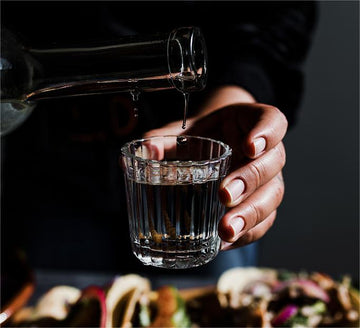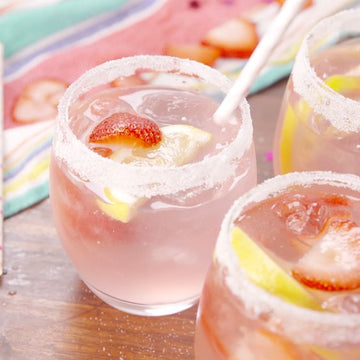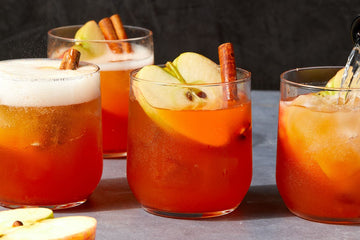
Distilled spirits have been an essential part of human culture for centuries. They are produced by fermenting a variety of raw materials, and then distilling the resulting mixture to increase the alcohol content. One such distilled spirit that has been gaining popularity in recent years is mezcal.
Mezcal is a type of distilled spirit that is made from the agave plant, which is native to Mexico. It has a unique flavor profile that is smoky and complex, and it is often sipped neat or used as a base in cocktails. Mezcal is similar to tequila, but it is made using a different variety of agave and is produced in a different region of Mexico.
Background
The history of mezcal can be traced back to the pre-Columbian era, when the indigenous people of Mexico began fermenting and distilling agave juice. Over time, mezcal production became an important part of Mexican culture and tradition, with different regions of Mexico producing their own unique varieties of mezcal.
Today, mezcal is experiencing a resurgence in popularity, both in Mexico and around the world. It has become a popular choice for cocktail enthusiasts and connoisseurs alike, and many craft distilleries are now producing small-batch mezcal using traditional methods.
The following table outlines the ingredients needed to make mezcal:
Ingredient |
Amount |
|
Agave |
100% |
|
Water |
Varies |
|
Yeast( Recommend our TY48) |
Varies |
|
Herb, fruits and spices(opyional) |
Varies |
The key ingredient in mezcal is the agave plant. Mezcal can be made using any variety of agave, but the most common variety used is the Espadin agave. Other varieties of agave that can be used to make mezcal include Tobala, Tepeztate, and Madrecuishe.
In addition to the agave, mezcal is made using a variety of other ingredients, including water and yeast. Some producers also use herbs, fruits, and spices to add flavor to the final product.
The following table outlines the tools needed to make mezcal:
Tool |
Purpose |
Agave harvesting tools |
To harvest the agave plant |
Roasting pit |
To roast the agave piñas |
Stone mill |
To crush the roasted agave piñas |
Fermentation tanks |
To ferment the agave juice |
Copper still |
To distill the fermented agave juice |
Bottles |
To bottle the mezcal |
Directions
Making mezcal is a time-intensive process that requires patience and attention to detail. The following is a step-by-step guide to making mezcal:
1`Harvest the agave: The agave plant is typically harvested by hand, using a machete or other sharp tool. The leaves are removed, leaving only the piña (heart) of the plant.
2`Roast the agave: The agave piñas are roasted in a pit, which gives mezcal its distinctive smoky flavor. The piñas are stacked in the pit and covered with hot rocks and soil, which creates an oven-like environment. The piñas are left to roast for several days, until they are caramelized and have a smoky aroma.
3`Crush the piñas: After roasting, the piñas are crushed using a stone mill. This releases the juice from the piñas, which is collected and transferred to fermentation tanks.
4`Ferment the juice: The agave juice is mixed with water and yeast in the fermentation tanks, and left to ferment for several days. During this time, the yeast converts the sugar in the juice into alcohol.
5`Distill the fermented juice: The fermented juice is transferred to a copper still, where it is distilled. The still heats the liquid, which causes the alcohol to evaporate and then condense into a higher-proof liquid.
6`Age the mezcal (optional): Some mezcal producers choose to age their mezcal in barrels or bottles for several months or even years. This can add additional flavor and complexity to the final product.
7`Bottle the mezcal: Once the mezcal has been distilled and aged (if desired), it is typically bottled by hand. Some producers may choose to filter or blend their mezcal before bottling to achieve a specific flavor profile.
Notes
Making mezcal is a complex process that requires a significant amount of skill and knowledge. While the steps outlined above provide a general overview of the process, there are many nuances and variations depending on the specific producer and region of Mexico.
It is also important to note that mezcal production can have a significant impact on the environment, as agave plants can take several years to mature and harvesting them can be resource-intensive. As such, it is important to choose mezcal producers who prioritize sustainability and responsible sourcing.
Summary
Mezcal is a unique and complex distilled spirit that is made using the agave plant. The process of making mezcal involves harvesting the agave, roasting the piñas, crushing them to extract the juice, fermenting the juice, and distilling the resulting liquid. Mezcal can be aged or blended to achieve a specific flavor profile, and is typically bottled by hand. When choosing mezcal, it is important to consider the environmental impact of production and to choose producers who prioritize sustainability and responsible sourcing.
Related Articles





